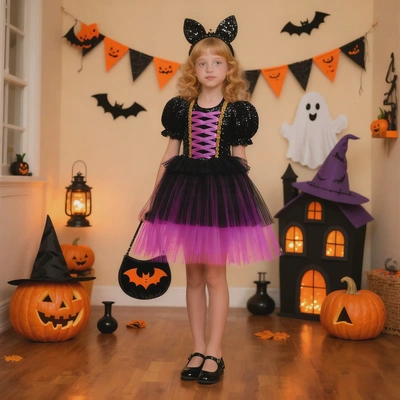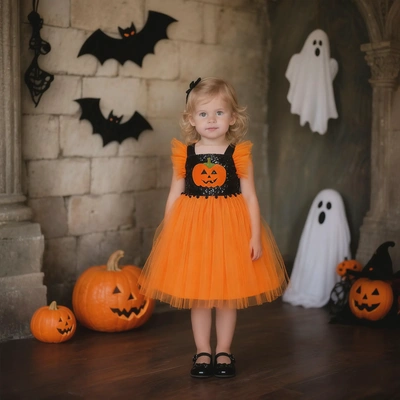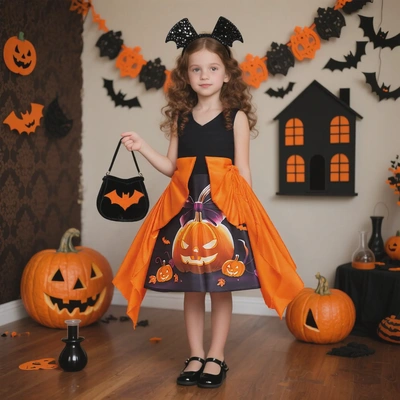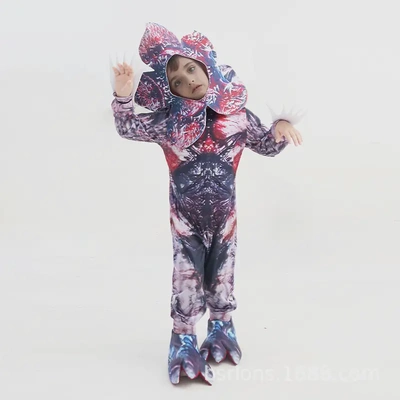What Is Cosplay? A Beginner's Guide to Anime Costumes in 2025?
If you’ve seen a teenager dressed as Nezuko from Demon Slayer at a convention, or a group of friends rocking matching Sailor Moon outfits at a festival, you’ve witnessed cosplay — one of the most creative and fast-growing subcultures in global pop culture.
But if you’re new to the world of anime, manga, or Japanese pop culture, you might be asking:
"What is cosplay, exactly?"
And more importantly:
"How do I get started with an anime costume — especially if I’m a parent helping my child?"
In this beginner-friendly 2025 guide, we’ll break down everything you need to know about cosplay — from its origins in Japan to how to choose your first authentic anime costume without overspending or feeling overwhelmed.
No jargon. No confusing terms. Just clear, practical advice — whether you're cosplaying for fun, for a school event, or your first anime convention.
What Does "Cosplay" Mean?
The word cosplay is a blend of two English words: "costume" and "play".
It was coined in 1984 by Japanese journalist Nobuyuki Takahashi after attending a sci-fi convention in the U.S. He noticed fans dressing up as characters — and brought the concept back to Japan, where it exploded in popularity.
Today, cosplay means dressing up as a character from anime, manga, video games, or movies, often with extreme attention to detail — from the outfit and wig to makeup and props.
Unlike Halloween costumes (which are often generic), cosplay is about accuracy, creativity, and passion.
Where Did Cosplay Come From?
While costume play has existed for decades, modern cosplay as we know it began in 1970s–80s Japan.
- 1978: The first official cosplay event was held at Japan SF Convention.
- 1990s: With the rise of Dragon Ball, Sailor Moon, and Pokémon, cosplay spread globally.
- 2000s–2025: Platforms like YouTube, TikTok, and Instagram turned cosplayers into influencers, with millions of fans worldwide.
Now, major events like Anime Expo (U.S.), Comiket (Japan), and Korea Joa Festival attract tens of thousands of cosplayers every year.
Why Do People Love Cosplay?
It’s not just about wearing a cool outfit. For many, cosplay is:
✅ Self-expression – A way to step into a character’s shoes and explore identity
✅ Artistic creativity – Designing, sewing, and styling a full look
✅ Community – Meeting fans who share your passion
✅ Confidence-building – Especially for teens and young adults
For kids and parents, cosplay can also be a fun family activity — think matching My Hero Academia or Studio Ghibli outfits for a school cultural day or holiday party.
Anime Costume vs. Regular Halloween Outfit: What’s the Difference?
Many people confuse cosplay with Halloween costumes. Here’s how they differ:
| Feature | Anime Cosplay Costume | Regular Halloween Costume |
|---|---|---|
| Accuracy | High – matches the character exactly | Low – generic (e.g., “pirate,” “princess”) |
| Materials | Often high-quality fabrics, wigs, props | Usually polyester, mass-produced |
| Fit | Designed for realism and movement | Often loose or one-size-fits-all |
| Purpose | Conventions, photoshoots, fan events | Trick-or-treating, parties |
👉 In short:
A Halloween costume says, “I’m a witch.”
An anime cosplay says, “I am Motoko Kusanagi from Ghost in the Shell.”
How to Choose Your First Anime Costume (Step-by-Step)
Starting your cosplay journey doesn’t have to be intimidating. Follow these 5 steps:
Step 1: Pick a Character You Love
Choose someone you genuinely connect with — not just what’s trending. Popular beginner-friendly characters include:
- Luffy (One Piece) – simple red vest & straw hat
- Jujutsu Kaisen students – school uniforms are easy to replicate
- Totoro (My Neighbor Totoro) – cute, non-verbal, great for kids
💡 Pro Tip: Pick a character with a simple outfit for your first try.
Step 2: Decide: Buy or DIY?
- Buy pre-made: Fast, accurate, great for beginners
- DIY: Cheaper, more creative, but time-consuming
For parents or first-timers, buying a high-quality anime costume is often the best choice.
Step 3: Check the Fit & Comfort
Especially for kids:
- Look for breathable fabrics (cotton blends, soft polyester)
- Ensure easy movement (no tight sleeves or restrictive hems)
- Confirm headwear fits securely without blocking vision
Avoid costumes with small parts that could be a choking hazard.
Step 4: Add the Right Wig & Props
Authenticity matters in cosplay. Key accessories:
- Wigs: Pre-styled in character colors (pink, blue, silver)
- Props: Soft swords, LED wands, or plush companions
- Makeup: Use non-toxic face paint for scars, symbols, or animal features
💡 Safety note: All props should be made of foam or plastic — never metal or sharp materials.
Step 5: Practice Wearing It
Have your child wear the full outfit at home for 30–60 minutes. Check for:
- Discomfort or irritation
- Vision blockage
- Overheating
This helps avoid surprises on event day.
Common Types of Anime Costumes in 2025
Here are the most popular categories right now:
🎭 School Uniforms
From Demon Slayer slayer corps to My Hero Academia hero training suits — clean, wearable, and perfect for conventions.
🌸 Kawaii (Cute) Characters
Think Hello Kitty, Pusheen, or Gudetama. Great for younger kids and lighthearted events.
⚔️ Battle Armor & Fantasy Gear
Characters like Goku or Levi Ackerman wear detailed armor. Best for older teens or advanced cosplayers.
🎎 Traditional Japanese Styles
Kimono-based looks from Spirited Away or Inuyasha — beautiful but require careful fitting.
Is Cosplay Safe for Kids?
Absolutely — as long as safety comes first.
✅ Parent tips for safe kids’ cosplay:
- Choose non-toxic, flame-resistant materials
- Avoid masks; use face paint or half-wigs instead
- Ensure full visibility and easy breathing
- Skip heavy boots or tripping hazards
- Supervise prop use (especially swords or wands)
Many schools and conventions now host "kids’ cosplay parades" — a safe, fun way to introduce children to the culture.
Where to Buy Authentic Anime Costumes?
Not all costumes are created equal. Watch out for:
- Cheap knockoffs with poor stitching
- Misprinted designs (wrong logo, wrong colors)
- Unsafe materials (strong chemical smell, rough fabric)
✅ What to look for:
- Licensed merchandise (officially approved by anime studios)
- Customer reviews with real photos
- Size charts and return policies
- OEKO-TEX® certified fabrics (safe for skin)
At [https://www.kmcoscraft.com/], we specialize in authentic anime costumes for kids and adults — designed with accuracy, comfort, and safety in mind. From light-up magical girl dresses to durable demon slayer robes, every piece is crafted for real-world wear.
👉 Explore our 2025 Anime Collection — perfect for beginners, families, and first-time cosplayers.
Final Thoughts: Cosplay Is for Everyone
You don’t need to be an artist, a seamstress, or a celebrity to enjoy cosplay. All you need is a character you love and the courage to bring them to life.
Whether you’re a teen stepping into your favorite hero’s shoes, or a parent helping your child become Pikachu for a school event — cosplay is about fun, creativity, and connection.
So go ahead. Pick a costume. Style the wig. Strike a pose.
Your cosplay journey starts now.





